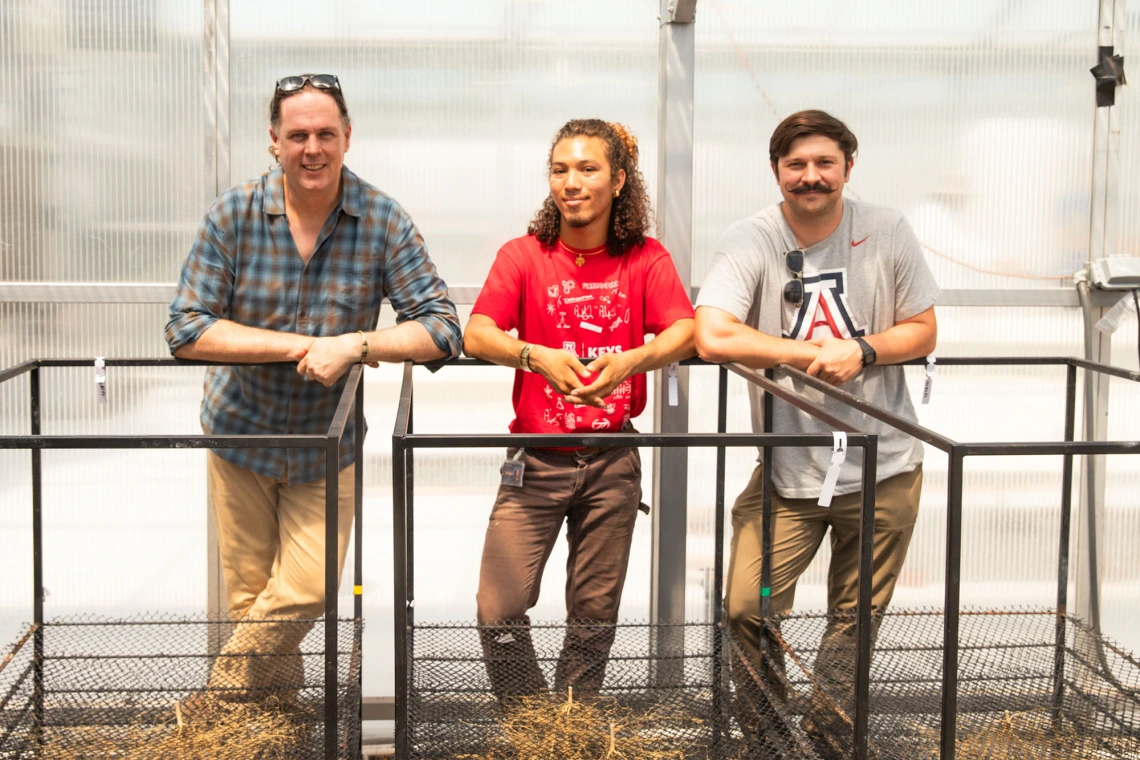Measuring roots to improve crops from the ground up
2025 Tucson KEYS intern Azani Anderson (they/he) helped validate the Alexander Bucksch lab's new 3D computer model that measures root growth in detail.

2025 Tucson KEYS intern Azani Anderson (right) from Basis Oro Valley worked with doctoral candidate William LaVoy (left) to better understand how root systems grow and adapt.
Lily Howe, BIO5 Institute
Alexander Bucksch, associate professor of plant sciences at the University of Arizona College of Agriculture, Life & Environmental Sciences, and his lab study something we usually don’t see: plant roots.
These underground organs help plants gather water and nutrients, and they change shape depending on what the plant needs. Some roots grow deep to find water, while others grow shallow to absorb nutrients like phosphorus.

Azani Anderson (left) assisted with early morning fieldwork for the Alexander Bucksch lab.
Lily Howe, BIO5 Institute
Understanding how root systems grow and adapt helps scientists breed crops that are more resilient to drought and changing climates in order to match the needs of 10 billion humans on earth by 2050.
This summer, Tucson KEYS intern Azani Anderson (they/he) helped validate the lab’s new 3D computer model that measures this root growth in detail.
“We needed someone to prove our new computational methods matched real world results,” said Bucksch. “What Azani did has never been done before.”
Working with doctoral candidate William LaVoy, Anderson took manual measurements of real plant roots using rulers and calipers. The goal was to confirm that the digital model matches what is actually happening underground.
“Seeing how someone young and newly trained in science can be so creative really opens your eyes,” said LaVoy. “We get so focused on doing things the ‘right way’ that we forget how powerful curiosity and fresh thinking can be."
Anderson’s project is essential for ensuring that the lab’s software can reliably analyze roots in real-world conditions, an important tool for the future of sustainable agriculture.
“Someday, I’d love to create the perfect plant—something resilient, adaptable, and tasty,” said Anderson. “With what I’ve learned this summer, I can imagine combining different root traits to help plants survive in tough conditions. And if I can share that knowledge, others can build on it too. That’s how we grow solutions.”

(Left to right) Alexander Bucksch, Azani Anderson, and William LaVoy in a greenhouse at the University of Arizona Campus Agricultural Center.
Lily Howe, BIO5 Institute
Take a closer look at how KEYS interns are helping advance real-world research across Arizona.

